If Longfellow had lived elsewhere — say Europe — he might have penned in his famous poem: “Under the shedding Sycamore tree the village smithy stands.” As it was Longfellow wrote about the mighty American chestnut which sadly because of a blight is nearly no more. And while mentioning Longfellow take a look at his picture on the left. Most of the photos of him show an old bearded man. This was taken when he was much younger, in 1855, when photography was young, too. And unlike other pictures from the time it’s not staged or posed. It’s more natural and gives us a glimpse of the man and personality. There’s a bit of destiny in Longfellow’s eyes. And what did he do right after the photo was taken? Go out to dinner because he was already dressed up? Or tell the photographer he’s pay him for the (then) expensive photo next week when one of his new poems sold? When I see old photos like this I wonder what the next moment was like, when they broke pose and went on with living. Photos are frozen slivers of time.
Unlike Longfellow’s chestnut tree the Sycamore gets a bad rap because of what you see in the picture above, leaves…. lots of large leaves in the yard. To me it’s attractive fall colors and in time more stuff for the compost pile. But, it’s the bane of many homeowners who want carefree landscaping. But Sycamores are forager friendly. The sap is drinkable and one could make a syrup out of it if one wanted to spend the time and energy. The sap tastes like slightly sweet water, and it is already filtered by the tree so also quite safe to drink. The wood is inert so it can be used in a variety of ways with food or cooking, from skewers over the campfire to primitive forks et cetera. To read more about the maligned Sycamore go here.
Cool weather is upon us, as much as it can be in Central Florida — nights in the 40s — which means time for Wild Radish and Wild Mustard. One usually find patches of either but rarely both together. Locally I find a lot of Wild Mustard, tall with blossoms at the top. In the southern end of the state where there are sugar fields to the horizon I see Wild Radish, twisted over with blossoms spread along the stem. They resemble each other and are used the similar ways. Indeed, there are no toxic members of the family. I eat a couple of species in the mustard group I have never successfully identified, and they hybridise easily. How do I know they are in the mustard group? By their blossom. To learn how to identify mustards anywhere in the world click here.
What do you do when the description of a plant doesn’t fit the plant in front of you? The answer depends on how far off the description is: You might have the wrong plant. If it is supposed to have five-petaled yellow flowers and you have white flowers with three petals, it’s probably the wrong plant. What if it is the right plant but still off a little? In time you come to recognize the variations and put together a picture of a particular species that takes its variations into consideration. That’s what I have to do with Lepidium virginicum, Poor Man’s Peppergrass. Nearly every time you see it here in Florida it looks different.
Up north L. virginicum is a two-year plant. It produces a basal rosette of leaves the first year and builds up a root to reproduce the next year. The second year it takes energy from the root to send up a flower spike which then blossoms and seeds. So in northern climes it is either or, either a first-year basal rosette or a second- year flower spike. But the seasons are so amorphous in much of the south it can be in any stage anytime. Thus it is a species that can look very different, which is quite confusing to beginning forager. You can have what are essentially first year and second year plants side by side and in different seasonal growths because of the long seasons.
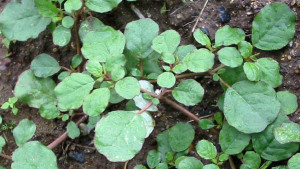
Trianthema portulacastrum, Desert Horse Purslane, a potential edible that on a glance can resembles purslane or the Tar Vine.
I’ve also noticed a plant locally that looks like Tar Vine. I have foraged Tar vine and this plant is similar but it is not quite. It is very tempting to make it fit the Tar Vine description, particularly when the plant hasn’t blossomed. You must avoid that. Waiting for the blossom is always good form. None of us are so hungry we must eat a new wild plant NOW! Take your time. The look of Tar Vine that I have in my head lets me see similar pattens in this new plant but also tells me it is not the Tar Vine. I think it might be Trianthema portulacastrum, a possible edible. My problem plant can also resemble purslane at times. You can read more about the “Desert Horse Purslane” here.
A while ago I was keying out a plant, that is, comparing what I had in front of me to a very exact botanical description. Everything fit except minute papillons. Papillons are tiny nipple-like structures. This plant was supposed to have them at the nodes and on the back of its sepals. Look as I may I could not find any papillons on the plant anywhere but I was reasonably sure I had the right plant and not a relative. What were the possibilities? 1) Perhaps I had the wrong plant and this minute difference was the only difference between related plants. That’s how we get variations in species or a new botanical name [often after the discoverer of that tiny difference.] 2) Another possibility was the plant the person was describing had a disease that created little papillons. 3) And yet another possibility was the describer saw papillons whether they were none. That, too, is not unheard of. What to do? With most plants that is easy: Find a couple of more descriptions. I did, and neither of those mentioned papillons. I had the right plant. I was not so lucky with the Chinese Elm.
There are several Chinese Elms near here, Ulma parvifolia. Every description I have read of them says they have tiny hairs on the leaf stem, or underside of the leaves. I have never seen such hair on any of them. Ever. Never. No way. Yet they are Chinese Elms and quite edible. What to do?
First it was rather a moot point since I was already consuming the tree. But more to the point, it is also in a family of no known toxicity so these missing little hairs were a mystery — still are a mystery — but not a party spoiler. These particular trees have been cultivated for centuries and there are many varieties and the ones near me, all planted at the same time long ago, maybe of a hairless variety. More so, this is a common landscape plant so there are a lot of them around and none of them that I can see have such tiny hairs. Maybe I need a microscope. At any rate, they certainly taste good, and I’m still here to relate the mystery.
Another time I had difficulty identifying a ground cherry. I had narrowed it down to two different possibilities. But I could never get the plant in hand to fit the plant’s book description (in two different books no less. ) Then one day I got a third book. In there I learned that the plant had three botanical names — that the first two books did not mention — and I had always been looking at the same species. The problem was each botanist used a different botanical name AND described the plant sufficiently different enough for me to never positively identify it (until the third book.) It’s irritating to realize two botanists can describe the same plant differently enough to not know it is the same plant. Thus seek out second and third opinions and descriptions! Another silly thing botanists do too often is mis-describe (better said, mal-describe) the direction a plant twists around another plant as it grows. I have two books that describe the same species as twisting left to right, and right to left. How is this so? One botanist was looking down at the plant so to him it twisted counter-clockwise, the other botanist was looking up so it twisted clockwise. That is why in my classes I say “at eye level” the plant twists left to right et cetera. By looking at eye-level we get rid of the rotational nonsense. The lesson is if the description doesn’t fit, you could have the wrong plant but be sure to check other sources.
Upcoming classes: Saturday, January 3rd, Mead Garden: 1500 S. Denning Dr., Winter Park, FL 32789. 9 a.m.; Sunday, January 4th, John Chestnut State Park: 2200 East Lake Road, Palm Harbor, FL 34685, 9 a.m.; Saturday, January 10th, Wickham Park: 2500 Parkway Drive, Melbourne, FL 32935-2335, 9 a.m.; Sunday, January 11th, Dreher Park, 1200 Southern Blvd., West Palm Beach, 33405, 9 a.m.; Saturday, January 24th, Red Bug Slough Preserve, 5200 Beneva Road, Sarasota, FL, 34233, 9 a.m.; Sunday, January 25th, Bayshore Live Oak Park, 23000 Bayshore Rd., Port Charlotte, FL 33980, 9 a.m., meet at the parking lot at the intersection of Bayshore Road and Ganyard Street. For more information about classes click here.
Eat The Weeds On DVD. My foraging videos do Plantagos and scores of other edible plants. The set has nine DVD. Each DVD has 15 videos for 135 in all. Some of these videos are of better quality than my free ones on the Internet. They are the same videos but many people like to have their own copy. I burn and compile the sets myself so if you have any issues I handle it. There are no middle foragers. And I’m working on adding a tenth DVD. To learn more about the DVDs or to order them click here.
On the Green Deane Forum we post messages and pictures about foraging all year-long. There’s also a UFO page, for Unidentified Flowering Objects so plants can be identified. Recent topics include: Comfort Food, Nice Seasonal Pots, Ginkgo Tree, Recipe Idea Needed, Flint Knapping, Squash? Hawthorn Catsup, Your Traditional Thanksgiving, Paw Paw Seeds, Dried Persimmons, Tell You Love Them, Indian Pipes, Amaranth, Mushrooms: Winter Is Here Six Weeks Early, Chicken of the Woods, Coco Plums? Acorns All Colors And Sizes, Turn On The Water, Nanoscopy, Puff on This, Lab To Determine Plant Composition, and Orange Red Berry. The link to join is on the right hand side of this page.
Two conferences are coming up worthy of your attention. The first is the Florida Earthskills gathering in early February in Hawthorn Florida. Held over Feb 5-8 it is an opportunity to learn, share and experience sustainable living skills. There also an early bird special if you sign up through January 1st. I have taught there for the last two years and there are virtually dozens of classes to sign up for including wild medicine, wild foods, didgeridoo making and playing, buckskin sewing, fire making, yoga, insect study, cabbage palm basketry, bow making, bird songs, atlati throwing, permaculture, mushrooms and a whole lot more, several somthings for everyone. To learn more about this Florida Earthskills gathering and sign up go here.
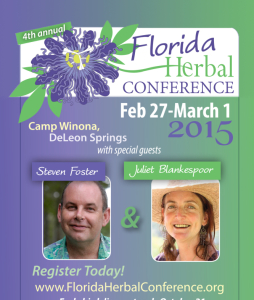 Later in February is the Florida Herbal Conference, Feb 27 to March 1st, organized by Emily Ruff. I’ve taught edible plants there for the last three years and will be there again this year. In fact I plan to spend a lot of time there. It’s a must for all southern herbalists and well as those northern ones who want to escape the cold and study their craft in the dead of winter. It always has interesting speakers and great classes. While there is some cross over between Earthskills and Herbalism the conferences are sufficiently different to justify attending both. For more information and to register go here.
Later in February is the Florida Herbal Conference, Feb 27 to March 1st, organized by Emily Ruff. I’ve taught edible plants there for the last three years and will be there again this year. In fact I plan to spend a lot of time there. It’s a must for all southern herbalists and well as those northern ones who want to escape the cold and study their craft in the dead of winter. It always has interesting speakers and great classes. While there is some cross over between Earthskills and Herbalism the conferences are sufficiently different to justify attending both. For more information and to register go here.
If you would like to donate to Eat The Weeds please click here



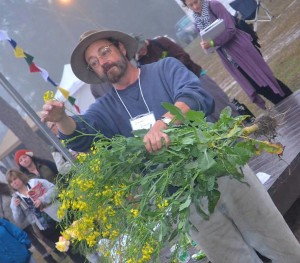
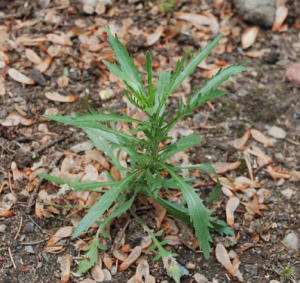
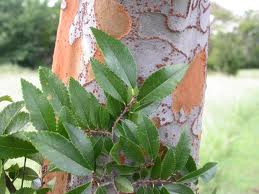

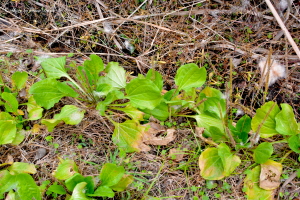
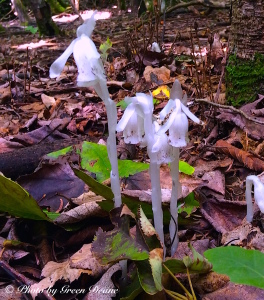


I’ve gone through your both articles: “Bad Description” & “Field TestingFor Edibility” . I do agree and feel the same particularly on the role of temptation & the subconscious. My people call the Desert Horse Purslane “Raba”. As I know it is mentioned in ayurvedic medicine. However, during my childhood in Kassala – eastern Sudan – my goats wo’nt eat it even if left without food for longer periods. By the way, as children we use to play with a friendly insect we call it”Humar el Bunat” meaning “girls’ donkey. An innocent weevil – may be Alfaalfa Hyperapostica or Alfaalfa Hyperanigrirostris we used to pick from under the Desert Horse Purslane , which when touched becomes motionless ; but instantly lives with vigor again when left freely. The plant among others namely: Alhuskaneet(Cenchrus biflorus) & Sheilini (Zoria glochiata) is considered infestive especilly in rain – fed cultivated areas with crops like Kurkude (Hibiscus sabdariffa) &Fool Sodani – pea nut (Arachis hypogaea L.) . Sown mainly in Kordofan State in western Sudan, the fields can be weeded by hoing twice during the season to improve harvest (75% increase according to a reseach team of A.M. elNaim and others from Kordofa University ) both qualitatively & quantitatively. Mery Christmas and Happy New Year Green.
It is easier to describe the twisting by left and right hand rule. Simply stretched fist where the thumb indicates the direction of twisting.